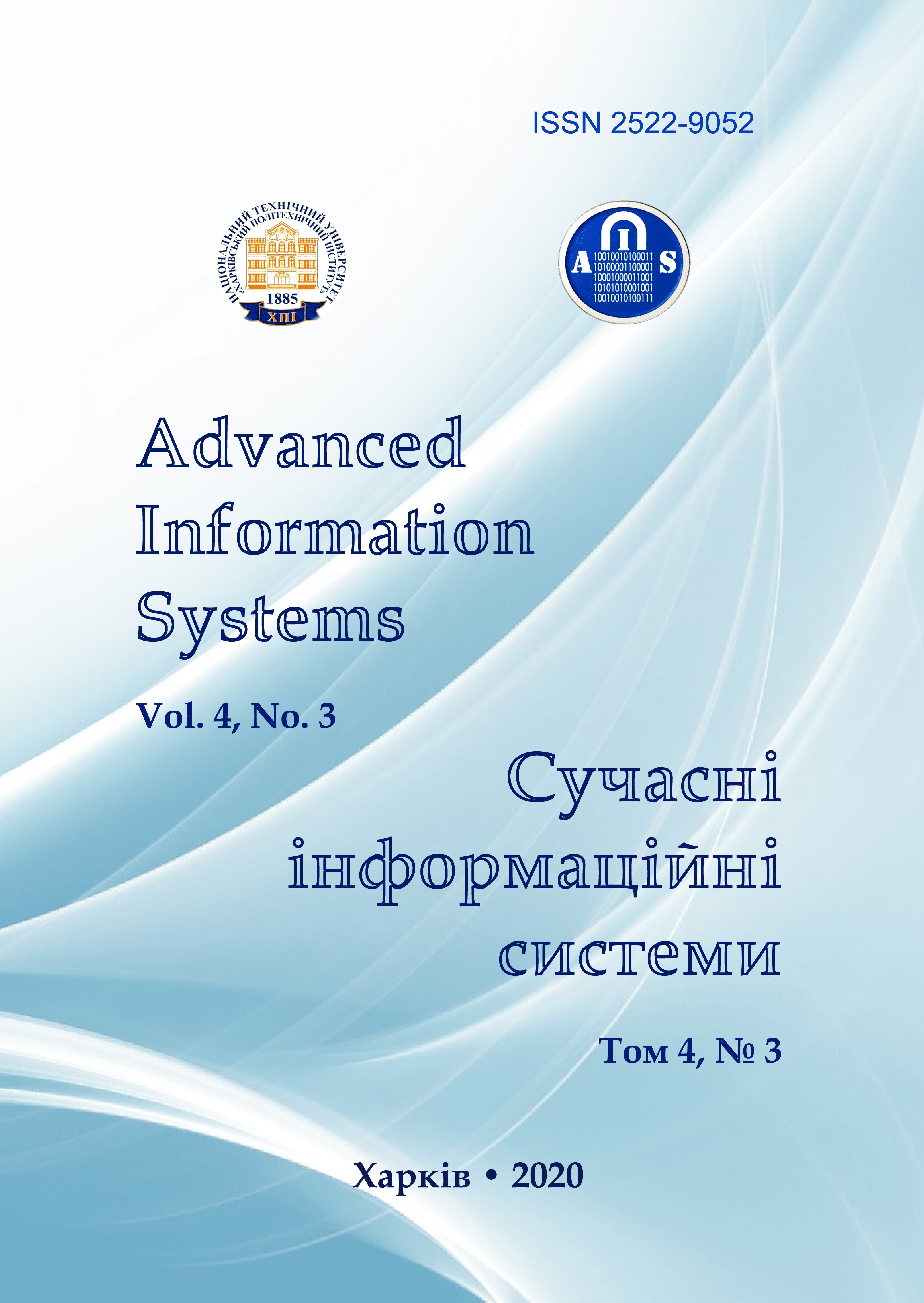CLARIFICATION OF THE ALGORITHM FOR ESTIMATING THE FREQUENCY OF THE SIGNAL RECEIVED BY THE SATELLITE COMMUNICATION SYSTEM IN A CONTINUOUS MODE UNDER THE INFLUENCE OF «NEIGHBORING CHANNELS»
Main Article Content
Abstract
Article Details
References
Horbatyy, I.V (2011), Systems of remote sensing of the Earth from space: monograph, SPOLOM, Lviv, 612 p.
Lyons, R.G. (2010), Understanding Digital Signal Processing, Prentice Hall, Boston, 992 p.
Boyko, Y.M. (2011), “Analysis of digital methods of modulation / demodulation in communication and information transmis-sion systems”, Visnyk Khmelnytskoho natsionalnoho universytetu, Khmelnytskyi, No. 1, pp. 103-110.
Brusin, E.A. (2007), “The use of FFT for estimating the carrier frequency of FM signals in demodulators of satellite communi-cation systems”, Tsifrovaya obrabotka signalov, St. Petersburg, No 2, pp.14–18.
Pavlenko, M.P. (2012), “Implementation of Viterbi decoder on FPGA for satellite communication systems”, Visnyk Natsion-alʹnoho tekhnichnoho universytetu Ukrayiny "KPI". 75 Seriya: Radiotekhnika, Kyiv, No. 49. pp. 71–75.
Dovgopoly, A.S., Ponomarenko, S.O., Ponomarenko, V.O., Tverdokhlibov, V.V. and Biloborodov O.O., (2018), “Improve-ment of satellite navigation systems of armaments and military equipment under the influence of intentional interference”, Ozbroyennya ta viyskova tekhnika, Kyiv, No. 1 (17), pp. 67-71.
Puzyrev P.I. (2012), “Investigation of the influence of interference on the adjacent channel on the probability of error in receiv-ing a frequency-manipulated signal”, Omskiy nauchnyy vestnik, Omsk, No 3 (112), pp.344-348.
Turovsky, O.L. (2020), “Analysis of the efficiency of application of a two-stage algorithm for estimating the carrier frequency of a phase-modulated signal of a satellite communication system during data transmission in a continuous mode”, Zvyazok, Ky-iv, No 3 (143), pp. 22–31.
Nasir, A.A. (2012), “Particle filters for joint timing and carrier estimation: Improved resampling guidelines and weighted bayesian cramer–rao bounds”, IEEE Trans. Commun, No 60(5), pp.1407–1419.
Tikhomirov, A.V. (2019), “Synchronization in systems with direct spectrum expansion”, Inzhenernyy vestnik Dona, Rostov on Don, No 9 (60), pp. 69-70.
Sadchenko, A.V., Kushnirenko, O.A., Koshelev, E.K. and Bondar, V.I., (2018), “Fast-acting algorithm for carrier frequency recovery and phase synchronization in modems with QPSK modulation”, Tekhnologiya i konstruirovaniye v elektronnoy appa-rature, Moscow, No 1, pp.28-36.
Nagornyuk, O.A. (2013), “Improving the accuracy of estimating the carrier and symbol frequency of signals with digital modu-lation”, Problemy stvorennya, zastosuvannya ta ekspluatatsiyi skladnykh informatsiynykh system: Vol. 8, pp. 62–70.
Dzhing, K., Zhong U., Lu Y. and Yan K. (2013), “Investigation of the algorithm for estimating the carrier frequency offset us-ing the preamble with a pseudo-noise sequence”, Radioelektronika, Vol. 56, No 1, pp. 34-42, DOI:
https://doi.org/10.20535/S0021347013010032
Juan, A.M. and Cecilia, G.G.(2011), “Block synchronization algorithms for UWB–OFDM systems”, Digital Signal Pro-cesssng, Vol. 21(2), pp. 187–295, DOI: https://doi.org/10.1016/j.dsp.2010.06.011
Weizhi, Z., Yuping, L. and Xiaoju, Y. (2013), “Research on carrier frequency offset estimation algorithm based on PN se-quence preamble in OFDM system”, Radioelectronics and Communications Systems, Kyiv, Vol. 56, pp. 29–35.
Brusin, E. A. (2007), “Estimation of the carrier frequency of FM signals in the demodulators of satellite communication sys-tems”, Elektrosvyaz', St. Petersburg, No 5, pp. 12–13.
Salim O.H. (2014), “Channel, phase noise, and frequency offset in OFDM systems: Joint estimation, data detection, and hybrid cramer-rao lower bound”, IEEE Trans. on Comm., No. 62(9), pp. 3311–3325, DOI:
https://doi.org/10.1109/TCOMM.2014.2345056
Turovsky O., Khlaponin Y. and Muhi-Aldin H. M. (2020), “Combined system of phase synchronization with increased order of astatism in frequency monitoring mode”, CEUR Workshop Proceedings, Vol. 2616, Session 1, pp. 53–62.
Turovsky, O., Drobyk, O., Makarenko, A. and Khokhlyuk, O. (2020), “Estimates of the carrier frequency of the signal received by the satellite communication system in package mode”, International Journal of Advanced Trends in Computer Science and Engineering, Vol 9, No. 3, pp. 3223–3228, DOI: https://doi.org/10.30534/ijatcse/2020/115932020.
